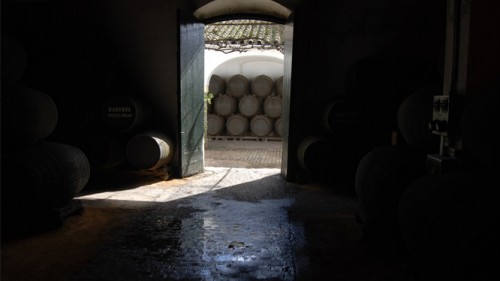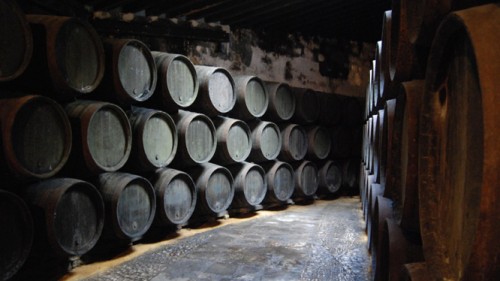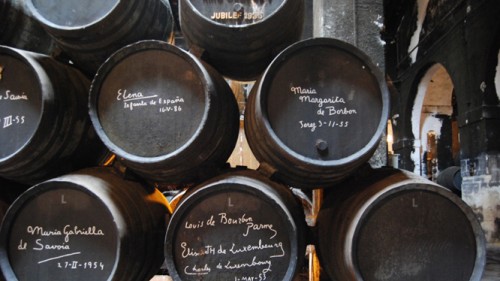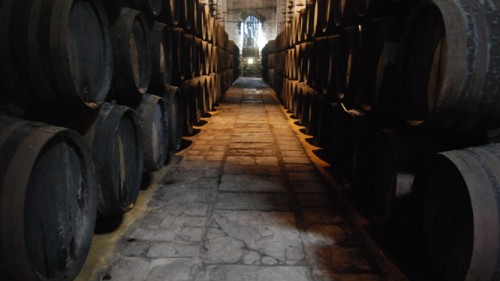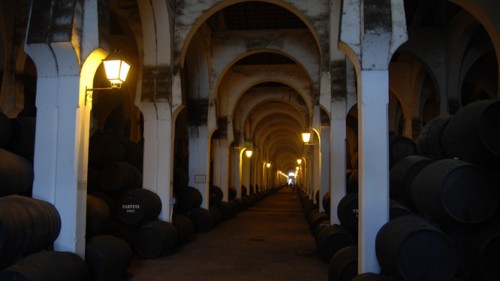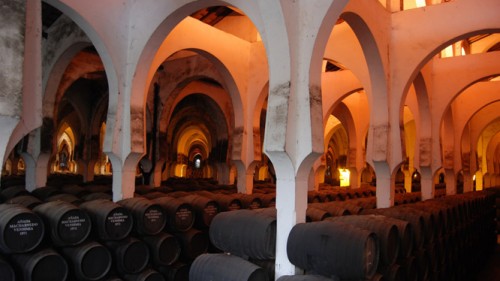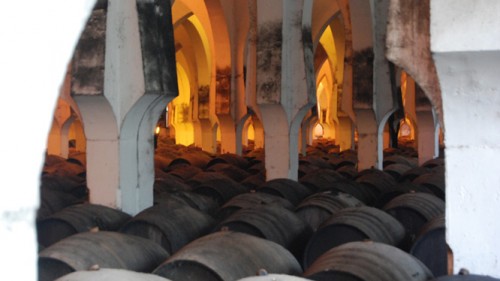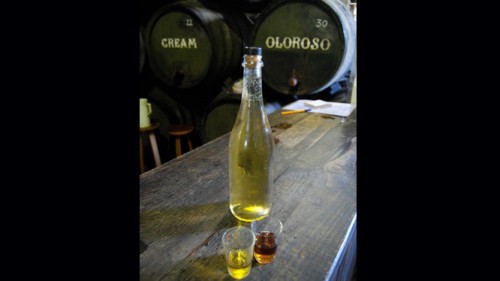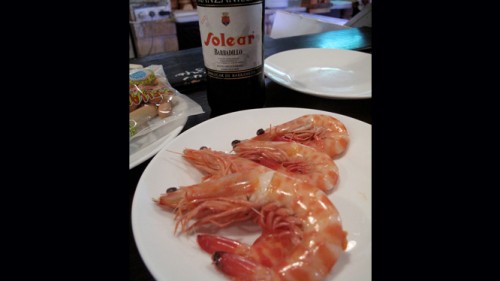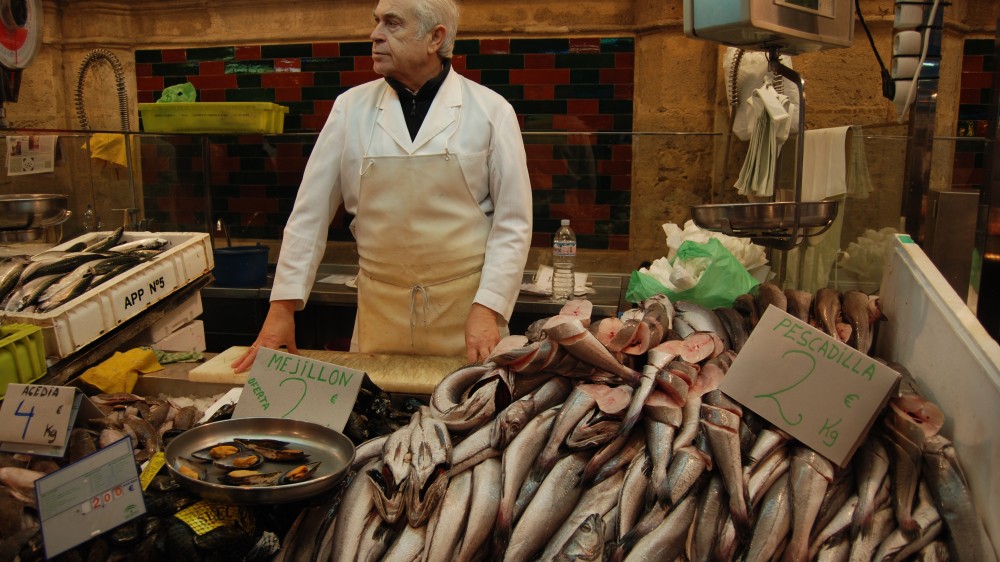The Sherry Triangle
There’s a reason Grandma’s been hoarding the sherry. Turns out she’s been keeping the best drink in the cabinet all to herself. It’s time to loosen her bony grip on the Amontillado. Here’s everything you ever needed to know about sherry but were too young to ask.
There are five horsemen of the sherry apolcalypse: fino, oloroso, amontillado, cream and Pedro Ximenez, the latter synonymous with the grape varietal that produces them all. More on their differences later. First, what makes sherry amazing? There’s a simple answer: it’s the unique ageing system, called the criadera or nursery.
Enter into the cathedral-like atmosphere of a traditional bodega (the cellar where wine is aged) and your eye slowly adjusts to the cool darkness, taking in the silhouette of rows upon rows of dark wine casks, stacked three or four barrels high. This is the criadera. In times gone by when demand for wine was astronomical, a bad harvest year could ruin the industry, so an ingenious method was designed of ageing the wines to achieve a consistent quality over several years. New wines are used to fill the top row of barrels; while bottles to be sold are filled only from the barrels on the floor. The barrels in between contain the wines as they are decanted downwards, mixing along the way, in a process that takes a minimum of 5 years. This process is called a saca, from where the English term “Sack” derives. The bottom row of barrels, referred to as the solera (from the Spanish suelo, or floor) contained a glorious mixture of young and old wines, producing a uniform end product. The decanting, bottling and refilling process is repeated over the course of decades to where now, a cask from the solera may contain a five-year-old wine mixed with a 105-year-old wine.
A second unique layer (literally) adds to the intrigue of these complex wines. Fino is produced using what is called biological ageing. In this process, the recently squeezed grape juice sits in the cask and begins to form a layer of yeast known as flor. The flor grows until it covers the wine completely, sealing it off from oxygen, which explains its pale straw color—it’s unoxidised. Olorosos andamontillados, by contrast, have been fortified to a higher alcoholic level which prevents any yeast from forming, thereby keeping the wines exposed to the air, so that they oxidize in the barrel as they age. This makes them turn a darker shade of brown, rather like a rust.
Old-timers in Jerez swear by the medicinal properties of fino with its yeast layer, and that’s no surprise. In the Gonzalez Byass bodega sits a cask of fino signed by none other than Dr. Alexander Fleming, the discoverer of penicillin, who spent time in Jerez studying the ubiquitous flor, and whose research there eventually led to his historic discovery.
So much for the production techniques. What if you’re staring down a particularly brave selection of sherries in Waitrose? Here’s what you need to know about their different flavours. Fino is the perfect aperitif wine: pale colored, light on the palate with yeasty notes and a smooth finish. Oloroso andamontillado are darker wines with nuttier flavours, sharper in the mouth. Pedro Ximenez is a very sweet, raisin-y wine typically served with desert and often featured as a key ingredient in both sweet and savoury dishes. Cream is a blend of oloroso with Pedro Ximenez, therefore sweeter than the former and more complex than the latter.
Puerto Santa Maria and Sanlucar de Barrameda, two coastal towns with a rich maritime history, are mere side players in the story in comparison to Jerez de la Frontera, the star of the show. But Sanlucar produces its own famous type of fino known as manzanilla, which derives its particular smooth and almost salty taste from the sea breezes that filter into the bodegas.
The British knew they were onto something good when they focused their sights on Spanish wines around the 15th century. Shakespeare, who has a monument dedicated to him in Jerez, often exalted “sack” in his plays, most famously with Falstaff’s declaration in Henry VI;
“If I had a thousand sons, the first humane principle I would teach them should be, to forswear thin potations and to addict themselves to sack”.
British involvement in the sherry industry became such that it accounted for nearly three quarters of wine imports to the UK by the 1850’s. The streets of Jerez ran with gold, and marriages between British importers and Jerez “bodega” families ensued, leaving us the anglicized bodega names we know today, such as “Harvey’s” “Williams & Humbert” or one of the most famous, Gonzalez-Byass, producing the famous “Tio Pepe”.
So, Shakespeare, Flemming, Grandma and the Queen. What more recommendation are you looking for?
Sebastian Lapostol is a jack-of-all-trades, and master of quite a few as well. Owner of the Dar Roumana hotel in Fez, he has a long-standing love affair with Andalucia and its many delightful (and historic) barrels.

